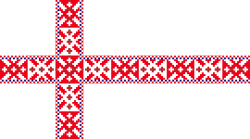Setomaa
Setomaa (Estonian: Setumaa; Russian: Сетумаа, Seto: Setomaa) is a region south of Lake Peipus and inhabited by the Seto people. The Seto dialect is a variety of South Estonian. The historic range of Setomaa is located on territories of present-day Estonia and Russia. Estonian Setomaa presently consists of lands in Võru County located in southeastern Estonia and bordering Russia. Petseri (Russian: Pechory) has been the historic and cultural centre for the Setos.

Current subdivision
Estonian Setomaa consists of:
- In Võrumaa county:
- Setomaa Parish (municipality)
The Russian part consists of Pechorsky District, part of Pskov Oblast. Between 1918–1944, the area was part of Estonia, administered as Petseri County. After Estonia regained its independence from the Soviet Union in 1991, there was a dispute between Estonia and Russia over the possession of this territory until Estonia dropped its territorial claims to these areas in 1995.[1]